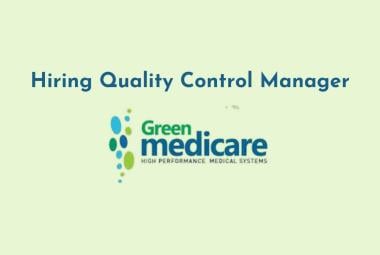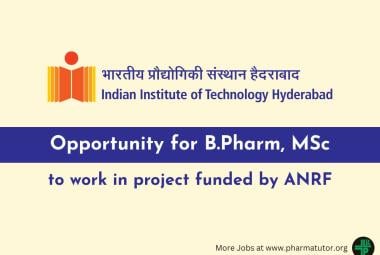About Authors:
G. Sowjanya*, P. Ramaa Bharathi, Dr.A.M.S.Sudhakar Babu
A.M.Reddy memorial college of pharmacy,
Narasarao Pet.
Sowjanya.gedagamma@gmail.com
Abstract
Film coating technology is now a days very important in the field of pharmacy particularly in formulation development. In the last 25 years tablet coating has undergone several fundamental changes. Many modifications were advocated to improve the basic process and film coating chosen in place of sugar coating. Film coating is the process whereby a tablet, capsule, or pellet is surrounded by a thin layer of polymeric material. Tablet film coating is performed by two types, one is aqueous film coating (generally water is used as a solvent) and non aqueous film coating (generally organic solvent are used). Film coating formulations usually contain Polymer, Plasticizer, Colourants / Opacifiers, Solvent / Vehicle. Many film coating materials have functional properties which enable the creation of sustained or delayed (enteric) release dosage forms. Coating solution composition may affect the quality of final coated tablets. Optimization of composition of film coating solution is also required. This article discusses tablet coating process, film coating, process parameters, film coating advantages and applications, components of film coating, evaluation of film coated tablets, film defects etc.
REFERENCE ID: PHARMATUTOR-ART-2004
Introduction
All drugs have their own characteristic, like some drugs are bitter in taste or has an unpleasant odor, some are sensitive to light or oxides, some are hygroscopic in nature. Because of this reason tablet coating is the choice of option to solve such problems in conventional dosage form.
In the past sugar coating was mostly borrowed from the confectionary industry. But now a days it is replaced with film coating, because the sugar coating process was a skilled manipulative process and could last for even five days. The operator must be highly skilled for such coating. Hence film coating is preferred over sugar coating.
Coating:
A coating is a covering that is applied to the surface of an object, usually referred to as the substrate. In many cases coatings are applied to improve surface properties of the substrate, such as appearance, adhesion, wetability, corrosion resistance, wear resistance, and scratch resistance.
“ Why Tablet Coating is Required ? ”
A number of reasons can be suggested:
* The core contains a material which has a bitter taste in the mouth or has an unpleasant odour.
* Coating will protect the drug from the surroundings with a view to improve its stability.
* Coating will increase the ease by which a tablet can be ingested by the patient.
* Coating will develop the mechanical integrity, means coated products are more resistant to mishandling (abrasion, attrition etc.)
* The core contains a substance which is incompatible in the presence of light and subject to atmospheric oxidation, i.e. a coating is added to improve stability.
* The core alone is inelegant.
* The active substance is coloured and migrates easily to stain hands and clothes.
* The coated tablets is packed on high-speed packaging machine. Coating reduces friction and increases packaging rate.
* Coating can modify the drug release profile, e.g., enteric coating, osmotic pump, pulsatile delivery.
Classification of coating process:
Coating processes are classified as follows:
Chemical vapor deposition
Here, a fluid precursor undergoes a chemical change at a solid surface, leaving a solid layer.
Chemical deposition is further categorized by the phase of the precursor:
Plating
Chemical solution deposition
Spin coating
Chemical vapor deposition(CVD)
Atomic layer deposition(ALD)
Physical deposition
Physical depositionuses mechanical, electromechanical or thermodynamic means to produce a thin film of solid.
preparation and use of coating solution/dispersions:
Ensure complete and uniform dissolution/dispersion of all coating ingredients throughout the coating process
Maintain viscosity of coating solution/dispersion throughout the coating process
Keep fluid lines free of any aggregates of solid material throughout the coating process.
Limit the amount of air entrapment/foam creation during coating solution/dispersion preparation and throughout the coating process
Product characteristics of the coating
- Low abrasion, smooth surface
- Good flow behaviour
- Masking of taste and smell
- Good protection against light, air and moisture
- Impervious separating layers in the case of multi-layer composition
- Systematic release of active ingredients
- Retardation, delayed dissolving
- Low hygroscopicity
- Visual attractiveness (pharmaceutical drug safety)
Film coating:
Film coating is the process whereby a tablet, capsule, or pellet is surrounded by a thin layer of polymeric material
Film coating is Application of thin barrier films, protective layers and coloured of functional coatings and it involves
Specific manipulation of product characteristics.
- Systematic release of active ingredients.
- Gastric juice resistance.
- Taste masking.
- Visual attractiveness
Functional coating tablets.
- Active ingredient can be incorporated in the tablet coating
Uniform and Dense coating
- Low coating mass in comparison with particle centre
Coating Thickness
- Between approx 5 micro meter and 50 micro meter (and more)
Film coating-types:
Tablet film coating is performed by two types, one is aqueous film coating (generally water is used as a solvent) and non aqueous film coating (generally organic solvent are used.) Some problems are associated with the non aqueous film coating like employee safety (it’s dangerous, it smells, and it’s not good to breathe.) atmosphere pollution etc. But key problem is with the approval of the regulatory authority. Highquality aqueous film coating must be smooth , uniform and adhere satisfactorily to the tablet surface and ensure chemical stability of a drug
Aqueous vs Solvent Film Coating
Solvent based coating solutions / suspensions (e.g. alcohols, methylene chloride)
- Rapid drying time due to inherent volatility
- Can be applied to moisture sensitive products
- Operator safety issues
- Requires modification to equipment and facility (flame-proofing / intrinsically safe)
- Environmentally responsible disposal is expensive (solvent recovery)
- Can impart taste / smell to the product
Aqueous based processes are now the most common
- No safety issues (e.g. can allow mobile vessels)
- Can release to atmosphere
- Takes longer and may lead to mechanical damage as tablets are tumbled for longer
- Requires more efficient drying air plant
Advances in drying efficiency has allowed aqueous processes to be developed
even for moisture sensitive products
Table 1: Reasons for film coating
|
Reasons for film coating include: |
|
|
Appearance |
To change the color, for branding purposes or other aesthetic reasons |
|
Stability |
To protect the active ingredient from moisture, light, and/or the acidic environment of the stomach |
|
Taste/odor Masking |
To provide an easy to swallow tablet without the bitter taste of many actives |
|
Release characteristics |
Many film coating materials have functional properties which enable the creation of sustained or delayed (enteric) release dosage forms |
Film Coating advantages
- Minimal weight gain (2-3% as opposed to 60-80 % for sugar coating)
- Coat is less likely to affect disintegration
- Single stage process an so generally quicker
- Easy to automate (less reliance on skilled operator / easier to meet GMP requirements of SOPs, validation etc) Maintains original shape of the core & allows for embossing
- Expensive equipment & plant requires large space
- High installation & energy costs
Applications
* Coating of tablets, pills for protecting the drug from surrounding environment, particularly air, moisture, light, thus retaining required stability.
* Masking unpleasant taste and odour, thus overcoming resistance to drug ingestion. Providing product ‘identity’ for differentiation of products from manufacturing, storage to patient.
* Imparting cosmetic elegance to product appearance, masking, any noticeable visible differences in tablet core from batch to batch.
* Reducing risk of interactions between incompatible ingredients.
* Improves mechanical integrity, eliminating possibility of abrasions chipping etc…
* Isolating porous cores.
* Extending and improving keeping properties.
* To improve compression characteristic (hardness during tableting).
An ideal film coating material should have the following attributes:
1. Solubility in solvent of choice for coating preparation.
2. Solubility required for the intended use, e.g., free water-solubility, slow water-solubility, or pH-dependent solubility (enteric coating)
3. Capacity to produce an elegant looking product.
4. Stability in the presence of heat, light, moisture, air, and the substrate being coated. The film properties should not change with ' aging.
5. Essentially no color, taste or odor.
6. Compatibility with common coating solution additives.
7. Nontoxicity with no pharmacologic activity, and ease of application to the particles or tablets.
8. Resistance to cracking, and provision of adequate moisture, light, odor, or drug sublimation barrier when desired.
9. No-bridging or filling of the debossed tablet surfaces by the film former.
10. Ease of printing procedure on high-speed equipment.
Film coating formulations usually contain the following components
Polymer,
Plasticizer,
Colourants / Opacifiers,
Solvent / Vehicle.
Polymers / Film Formers
- form a clear, non-tacky, mechanically strong film
- must be soluble in the chosen solvent and also allow release of drug in the body
- must be compatible with the core contents most common example is Hydroxy propyl methyl cellulose (HPMC)
- Amongst the vast majority of the polymers used in film coating are cellulose derivatives or acrylic polymers and copolymers.
Non-enteric polymers
·Hypromellose
·Hydroxyethyl cellulose
·Hydroxyethylmethyl cellulose
·Carboxymethylcellulose sodium
·Hydroxypropyl cellulose
·Polyethylene glycol
·Ethylcellulose
Enteric polymers
Some examples of enteric coating polymers
·Hypromellose phthalate
·Polyvinyl acetate phthalate
·Cellulose acetate phthalate
·Polymethacrylates
·Shellac
Products for Immediate Release include:
Cellulose-based coating materials
Methacrylate-based coating materials
Products for Sustained Release include:
Cellulose-based coating materials
Methacrylate-based coating materials
Products for Enteric coating include:
Cellulose-based coating materials
Methacrylate-based coating materials
Shellac
Plasticizers
- modify the properties of the polymer to assist the coating process (e.g. by reducing brittleness of the coat)
- need to be miscible with the polymer e.g. propylene glycol, polyethylene glycol (PEG)
Plasticizers are simply relatively low molecular weight materials which have the capacity to alter the physical properties of the polymer to render it more useful in performing its function as a film coating material. It is generally considered to be mechanism of plasticizer molecules to interpose themselves between individual polymer strands thus breaking down polymer-polymer interactions. Thus polymer is converted in to more pliable materials. Plastisizers are classify in three groups. Poly os type contain glycerol, propylene glycol, PEG ( Polyethylene glycol ). Organic esters contain phthalate esters, di butyl sebacete, citrate esters, triacetin. Oils/glycerides contain castor oil, acetylated, monoglycerides, fractionated coconut oil.
Solvents/Vehicles
The key function of a solvent system is to dissolve or disperse the polymers and other additives. All major manufactures of polymers for coating give basic physicochemical data on their polymers. These data are usually helpful to a formulator. Some important considerations for solvent are as follows:
The major classes of solvents being used are
·Water
·Alcohols
·Ketones
·Esters
·Chlorinated hydrocarbons
Because of environmental and economic considerations, water is the solvent of choice; however organic coating is totally cannot be avoided.
Colourants / opacquants
The sematerials are generally used as ingredients in film-coating formulae to contribute to the visual appeal of the product, but they also improve the product in other ways
Identification of the product by the manufacturer and therefore act as an aid for existing GMP procedures.
- Reinforcement of brand imaging and reduction in product counterfeiting.
- Identification of the product by patients by using colourants.
Colourants for film coating are having, in more or less amount, property of opacifier. So they would give protection to active ingredients in presence of light. Colourants are mainly classified in to three part. Sunset yellow, tartrazine, erythrosine are examples of Organic dyes and their lakes. Iron oxide yellow, red and black, titanium dioxide, talc are the examples of Inorganic colours. Anthrocyanins, ribofloavine and carmine are the examples of natural colours.
Miscellaneous coating solution components
To provide a dosage form with a single characteristic, special materials may be incorporated into a solution.
Flavours and sweeteners are added to mask unpleasant odours or to develop the desired taste. For example, aspartame, various fruit spirits (organic solvent), water soluble pineapple flavour (aqueous solvent) etc.
Surfactants are supplementary to solubilize immiscible or insoluble ingredients in the coating.For example, Spans,Tweens etc.
Antioxidants are incorporated to stabilize a dye system to oxidation and colour change. For example oximes, phenols etc.
Antimicrobials are added to put off microbial growth in the coating composition. Some aqueous cellulosic coating solutions are mainly prone to microbial growth, and long-lasting storage of the coating composition should be avoided. For example alkylisothiazloinone, carbamates, benzothiazoles etc.
Process Principles
A very even application of the coating material is an important feature of the coating process. Coatings must be dense and without mechanical damage and cracks. Film coating is an effective process for the application of protective films for manipulating the product characteristics. Glatt offers various technical solutions for coating different particles and tablets:
Fluid Bed Coating (Top Spray Coating, Bottom Spray Coating, Rotor Coating)
Drum Coating
Spouted Bed Technology
In each case, the coating fluid is sprayed onto the solid material, which is presented to it. The introduction of the process air evaporates the fluid and dries the film coating. Small droplets and a low viscosity ensure a uniform distribution
Coating Processes and Equipment
The majority of tablet film coating is performed in perforated closed system pans. These provide the necessary controlled conditions of temperature and air flow which enable reproducible and efficient application of both appearance and functional coatings. In addition, they limit operator exposure.
In choosing a system for film coating, the following points should be addressed:
1. Adequate supply of process air for the volume of the pan.
2. Ability to maintain temperature within a narrow range (typically 30 to 70ºC).
3. Ability to maintain dew point within a narrow range (typically 10 - 20ºC).
4. Pan and spray system designed to be easily cleaned/sanitized.
5. Spray system fluid path should have a minimum of dead spaces, since many coating formulations are dispersions or suspensions.
6. Spray system atomization and fan air are easily controlled, preferably from the exterior of the pan.
7. Air flow bypass capability (especially if the pan is to be used for sugar coating.
8. Explosion prevention construction if flammable solvents are to be used.
9. Treatment of Inlet and Exhaust Air as required by GMP and environmental regulations.
Before few years different types of coating pans are used for coating like conventional coating pans, manesty accelacota, driam ( driacoater), butterfly coater etc. Now a days the side-vented, perforated pan-coater is the most commonly used coating device of tablets. In equipment spray nozzle, number of spray nozzle, pan size, etc may also affect the quality of final product. Its air flow system through a perforated pan ensures rapid and continuous drying conditions. The low evaporation capacity of water requires high drying efficiency of aqueous film-coating equipment.
The pan should be equipped with appropriate sensors so that the following conditions can be monitored/controlled:
Pan rotational speed
Inlet air temperature
Inlet air dew point
Inlet air flow rate
Spray system atomization and fan air flow rate
Coating liquid spray rate
Exhaust air temperature
Product temperature
Process parameters
Spray rate
The spray rate is an significant parameter since it impacts the moisture content of the formed coating and, subsequently, the quality and uniformity of the film. A low coating liquid spray rate causes incomplete coalescence of polymer due to insufficient wetting, which could effect in brittle films. A high coating liquid spray rate may result in over wetting of the tablet surface and subsequent problems such as picking and sticking. If the spray rate is high and the tablet surface temperature is low, films are not formed during the spraying but the post drying phase, and rapid drying often produces cracks in the films.
Atomizing air pressure
In general, increasing the spraying air pressure decreases the surface roughness of coated tablets and produces denser and thinner films. If spraying air pressure is excessive, the spray loss is great, the formed droplets are very fine and could spray-dry before reaching the tablet bed, resulting in inadequate droplet spreading and coalescence. If spraying air pressure is inadequate, the film thickness and thickness variation are greater possibly due to change in the film density and smaller spray loss. In addition, with low spraying air pressure big droplets could locally over wet the tablet surface and cause tablets to stick to each other.
Inlet air temperature
The inlet air temperature affects the drying efficiency (i.e. water evaporation) of the coating pan and the uniformity of coatings. High inlet air temperature increases the drying efficiency of the aqueous film coating process and a decrease in the water penetration into the tablet core decreases the core tablet porosity, tensile strength and residual moisture content of coated tablets. Too much air temperature increases the premature drying of the spray during application and, subsequently, decreases the coating efficiency. Measuring the pan air temperature helps to manage the optimum conditions during the coating process and, consequently, enables predicting possible drying or over wetting problems which may result in poor appearance of the film or may have unfavorable effects on the moisture and heat sensitive tablet cores.
Rotating speed of pan
It is well documented that increasing the rotating speed of the pan improves the mixing of tablets. The pan speed affects the time the tablets spend on the spraying zone and, subsequently, the homogeneous distribution of the coating solution on the surface of each tablet throughout the batch. Increasing the pan speed decreases the thickness variation and increase the uniformity of coatings. Too much rotating speed of the pan will cause the tablet to undergo unnecessary attrition and breakage.
NOW YOU CAN ALSO PUBLISH YOUR ARTICLE ONLINE.
SUBMIT YOUR ARTICLE/PROJECT AT articles@pharmatutor.org
Subscribe to Pharmatutor Alerts by Email
FIND OUT MORE ARTICLES AT OUR DATABASE
Evaluation
Evaluation of the quality of coating on a tablet involves studying not only the film but also the film-tablet surface interactions. A number of test methods can be employed.
1. Adhesion tests with tensile-strength testers have been used to measure the force required to peel the film from the tablet surface. Rowe has been a prolific investigator in the area of film coating evaluation and the factors affecting film strength.
2. Di ametral crushing strength of coated tablets can be determined with a tablet hardness tester. Obviously, the resistance of the uncoated tablet to crushing will be a major factor in the test results. With this test, one is seeking information on the relative increase in crushing strength provided by the film and the contribution made by changes in the film composition.
3. The rate of coated tablet disintegration and/or dissolution must also be assessed. Unless the coating is intended to control drug release, the coating should have a minimal effect on tablet disintegration or dissolution.
4. Stability studies must be conducted on coated tablets to determine if temperature and humidity changes will cause film defects. Exposure of coated tablets to elevated humidity and measurement of tablet weight gain provide relative information on the protection provided by the film.
5. Some investigators have attempted to quantify film surface roughness, hardness, and color uniformity through instrumental means, but in general, visual inspection is sufficient to define relative coated tablet quality. A practical qualitative measure of the resistance of a coated tablet to abrasion can be obtained by merely rubbing the coated tablet on a white sheet of paper. Resilient films remain intact, and no color is transferred to the paper; very soft coatings are readily "erased" from the tablet surface to the paper.
Water Vapor Permeability
If the coating is going to be used as a seal coat or to provide some physical protection for a tablet
Containing a water-unstable drug, then knowledge of the film's water vapor permeability should be assessed.
Film Tensile Strength
Strips of the film are tested on a tensile strength tester by applying a known force at a constant rate. The elasticity and tensile strength/breaking stress of the films are evaluated.This test is particularly good when the effect of varying the concentration of a series of plasticizers or additives is being evaluated. Coating compositions that yield brittle films must be plasticized to obtain a more flexible film that is acceptable for tablet coating. Tensile-strength testing is one of the better ways to optimize the level of additives in the formulation.
Quality Control
After coating, the tablets should be inspected and tested for appearance and performance. Inspection should include checks for color (both hue and continuity), size, appearance, and any physical defects in the coating, which could affect the performance or stability of the product.
The in vitro performance of the coated product is evaluated by disintegration and dissolution testing.
Film Defects
Variations in formulation and processing conditions may result in unacceptable quality defects in the film coating. The source of these defects and some of their probable causes are as follows.
Sticking and Picking. Over wetting or excess flm tackiness causes tablets to stick to each other or to the coating pan. on drying, at the point of contact, a piece of the film may remain adhered to the pan or to another tablet, giving a "picked" appearance to the tablet surface and resulting in a small exposed area of the core. ~A reduction in the liquid application rate or increases in the drying air temperature and air volume usually solve this problem. Excessive tackiness may be an indication of a poor formulation.
Roughness. A rough or gritty surface is a defect often observed when the coating is applied by a spray. Some of the droplets may dry too rapidly before reaching the tablet bed, resulting in deposits on the tablet surface of "spray dried" particles instead of finely divided droplets of coating solution. Moving the nozzle closer to the tablet bed or reducing the degree of atomization can decrease the roughness due to "spray drying." Surface roughness also increases with pigment concentration and polymer concentration in the coating solution.
Orange-Peel Effects. Inadequate spreading of the coating solution before drying causes a “range-peel" effect on the coating. This indicates that spreading is impeded by too rapid drying or by high solution viscosity. Thinning the solution with additional solvent may correct this problem.
Bridging and Filling. During drying, the film may shrink and pull away from the_sharp .corners of an intagliation or bisect, resulting in a 'bridging" of the surface depression. This defect can be so severe that the monogram or bisect is completely obscured. This mainly represents a problem with the formulation. Increasing the plasticizer content or changing the plasticizer can decrease the incidence of bridging. Filling is caused by applying too much solution, resulting in a thick film that fills and narrows the monogram or bisect. In addition, if the solution is applied too fast, overwetting may cause the liquid to quickly fill and i.e. retained in the monogram. Judicious monitoring of the fluid application rate and thorough mixing of the tablets in the pan prevent filling.
Blistering. When coated tablets require further drying in ovens, too rapid evaporation of the solvent from the core and the effect of high temperature on the strength, elasticity, and adhesion of the film may result in blistering. Milder drying conditions are warranted in this case.
Hazing/Dull Film. This is sometimes called bloom. It can occur when too high a processing temperature is used for a particular fonryulation. Dulling is particularly evident when cellulosic polymers are applied out of aqueous media at high processing temperatures. It can also occur if the coated tablets are exposed to high humidity conditions and partial solvation of film results.
Color Variation. This problem can be caused by processing conditions Or the formulation. Improper mixing, uneven spray pattern, and insufficient coating may result in color variation. The migration of soluble dyes, plasticizers, and other additives during drying may give the coating a motded or spotted appearance. The use of lake dyes eliminates dye migration. A reformulation with different plasticizers and additives is the best way to solve film instabilities caused by the ingredients.
Cracking. Cracking occurs if internal stresses in the film exceed the tensile strength of the film. The tensile strength of the film canbe increased by using higher-molecular-weight polymers or polymer blends. Internal stresses in the film can be minimized by adjusting the plasticizer type and concentration, and the pigment type and concentration.
Conclusion
Film coating technology is now a days very important in the field of pharmacy particularly in formulation development.Film coating is the process whereby a tablet, capsule, or pellet is surrounded by a thin layer of polymeric material. Coating solution composition may affect the quality of final coated tablets. Some coating process parameters are affect the final quality of coated tablets so it is necessary to optimize the coating process parameters for particular equipment and particular film former. Optimization of composition of film coating solution is also required. Process parameters and coating composition play an important in coating of tablets. So for getting good final quality of coated tablet it would be necessary to optimize the parameters.
References
1. Cole G. Pharmaceutical Coating Technology,Taylor and Francis Ltd, 1998;1-5.
2. Porter C. Coating of Pharmaceutical Solid-dosage forms, Pharm. Tech., 1980,4(3), 66.
3. Libermen H, Lachman L, Pharmaceutical Dosage Forms: Tablets, Vol. I to III, Marcel Dekker Inc., N.Y, 85-143.
4. Hinkes T, Solvent film coating: aqueous vs. Organic, Wisconsin Alumni Research Foundation Madison, Wisconsin.
5. Nyamweya N, Mehta K. Film Coating with Aqueous Latex Dispersions, Pharmaceutical Technology Yearbook 2001.
6. Hogan J. Pharmaceutical Coating Technology, Taylor and Francis Ltd 1998; 6-52.
7. Rowe R, Sheskey P, Owen S. Pharmaceutical Excipients.
8. Martini L, Ford J, Roberts M. The use of hypromellose in oral drug delivery, J Pharm Pharmacol. 2005,57,533-546.
9. Porter S. Coating of Pharmaceutical Dosage forms, Remington’s book of science,volume 1, Ch 46; 894-902.
10. Rowe R. The effect of some formulation and process variables on the surface roughness of film-coated tablets. J. Pharm. Pharmacol 1978a,30,669-672.
11. Elaine S, Celine V, Dawn Z, Xiaohua L, Anthony J, Paul W. Study of Coat Quality of Tablets Coated by an On-line Supercell Coater, AAPS PharmSciTech 2007,8(3), Article 63.
12. Tobiska S, Peter K. Coating uniformity and coating efficiency in a Bohle Lab-Coater using oval tablets European Journal of Pharmaceutics and Biopharmaceutics. 2003,56,3-9.
13. Philip A, Rowe R, York P, Doherty C. The effect of experimental design on the modeling of a tablet coating formulation using artificial neural networks;European Journal of Pharmaceutical Sciences. 2002,16,281-288.
14. Heinamaki. J, Ruotsalainen M, Lehtola V, Antikainen O, Yliruusi J. Optimization of Aqueous-Based Film Coating of Tablets Performed by a Side-Vented Pan- Coating System. Pharmaceutical Development and Technology. 1997,2(4),357-364.
15. Optimal Coating Process Parameters for a New, Fully-Formulated, Acrylic-based, Enteric, Film-Coating System,Poster ReprintAmerican Association ofPharmaceutical Scientists,November 2000.
16. Obara S, McGinity J. Influence of processing variables on the properties of free films prepared from aqueous polymeric dispersions by a spray technique. Int. J. Pharm.1995,126,1-10.
17. Franz R, Doonan G. Measuring the surface temperature of tablet beds using infrared thermometry. Pharm Technol. 1983,7,55-67.
18. Porter S, Verseput R, Cunningham C. Process optimization using design of experiments. Pharm. Technol. 1997,21,60-70.
19. Twitchell A, Hogan J, Aulton M. The behaviour of film coating droplets on the impingement onto uncoated and coated tablet. S.T.P. Pharm. Sci. 1995a,5,190-195.
20. Twitchell A, Hogan J, Aulton M. Assessment of the thickness variation and surface roughness of aqueous film coated tablets using a light-section microscope. Drug Dev Ind Pharm 1995b,21,1611-1619.
NOW YOU CAN ALSO PUBLISH YOUR ARTICLE ONLINE.
SUBMIT YOUR ARTICLE/PROJECT AT articles@pharmatutor.org
Subscribe to Pharmatutor Alerts by Email
FIND OUT MORE ARTICLES AT OUR DATABASE









